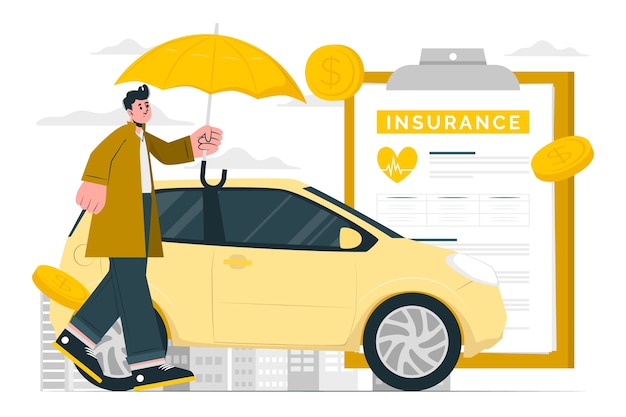Ever felt a tightness in your chest before a long drive? Maybe it’s the unpredictable nature of the road, or the nagging worry of potential accidents. While defensive driving is always essential, having the right vehicle insurance can significantly ease those pre-drive anxieties. This comprehensive guide dives deep into the world of car insurance and bike insurance, also known as Vehicle Insurance, explaining why you need it, the different coverage options available, and how to choose the perfect policy for your beloved four (or two) wheeled companion.
Why Vehicle Insurance is Your Financial Safety Net
Imagine cruising down the highway, enjoying the scenery, when suddenly another car swerves into your lane. An accident occurs, leaving both vehicles with significant damage. Without insurance, the financial burden of repairs falls solely on you. This could mean dipping into your savings, taking out loans, or even facing financial hardship.
Vehicle insurance acts as a financial safety net in such situations. It covers the costs associated with accidents, thefts, and even natural disasters. Here’s a breakdown of the two main coverage types:
- Third-Party Liability: This is mandatory by law in most countries. It covers any injuries or property damage caused to a third party (other driver, pedestrian, or their vehicle) by your vehicle. In simpler terms, if you’re responsible for an accident, third-party liability insurance ensures the other party’s financial losses are covered.
- Own Damage: This optional coverage protects your car or bike itself in case of accidents, theft, fire, or natural disasters. So, if your car gets damaged in a hailstorm or stolen from your driveway, own-damage insurance would cover the repair or replacement costs.
Vehicle Insurance – Car Insurance vs. Bike Insurance: Understanding the Nuances
While both car and bike insurance offer financial protection, there are some key differences to consider when choosing the right policy:
- Coverage Options: Car insurance typically offers a wider range of coverage options compared to bike insurance. This might include add-on covers like personal accident cover for the driver and passengers, engine protection against wear and tear, and roadside assistance in case of breakdowns. Bike insurance generally focuses on theft and accident protection, with some companies offering personal accident cover for the rider as an add-on.
- Cost: Due to the higher value and potential repair costs associated with cars, car insurance generally comes at a steeper premium compared to bike insurance. The value of your car, your driving record, and the chosen coverage options all play a role in determining the final premium amount.
- Regulation: Third-party liability insurance is mandatory for both cars and bikes in most countries. However, own-damage coverage might be optional for bikes, depending on the engine capacity or the bike’s age. In some regions, older bikes with lower engine capacities may not be required to have own-damage coverage.

Choosing the Right Car Insurance Policy: Navigate with Confidence
With a plethora of car insurance options available, selecting the right one can feel overwhelming. Here’s a breakdown of the key factors to consider to ensure you choose a policy that perfectly suits your needs:
- IDV (Insured Declared Value): This represents the market value of your car at the time of insurance. A higher IDV translates to a higher premium, but ensures you receive a fair amount in case of a total loss. For instance, if your car is valued at ₹ 5 lakh and you choose an IDV of ₹ 4 lakh, the premium will be lower, but the insurance company will only pay you ₹ 4 lakh in case your car is stolen or written off in an accident.
- Types of Coverage: Third-party liability is mandatory, but consider adding own-damage coverage for comprehensive protection. You might also explore add-on covers like personal accident cover and roadside assistance based on your needs. Think about how much you can afford to spend out of pocket in case of repairs and choose the coverage level that best suits your financial situation.
- No Claim Bonus (NCB): Driving safely and avoiding claims for a period rewards you with a discount on your car insurance premium. A higher NCB translates to significant savings on your renewal premium. So, maintaining a clean driving record can benefit you financially in the long run.
- Company Reputation: Don’t just go for the first company you come across. Research different insurance companies, compare their claim settlement ratios (the percentage of claims settled successfully), and customer service reviews before making a decision. Look for companies with a good reputation for prompt claim settlement and efficient customer service.

Tailoring Your Bike Insurance Coverage: Ride Easy with the Right Protection
While bike insurance might seem simpler than car insurance, there are still choices to be made to ensure you have the right level of protection:
- Third-Party vs. Comprehensive Coverage: As mentioned earlier, third-party liability is mandatory. Comprehensive coverage offers additional protection for your bike in case of theft, accidents (including fire damage caused by the accident), natural disasters (floods, earthquakes, etc.), and riots. If you have a brand new bike or a bike with a high engine capacity, opting for comprehensive coverage is recommended for complete peace of mind.
- IDV (Insured Declared Value): Similar to car insurance, a higher IDV for your bike ensures a better payout in case of a total loss. When setting the IDV, consider the current market value of your bike and any modifications you’ve made that might increase its value.
- Add-on Covers: While comprehensive coverage offers a good level of protection, consider adding on some additional covers for enhanced security:
- Personal Accident Cover: This covers medical expenses and potential permanent disability benefits incurred by the rider in case of an accident.
- Rider’s Medical Expenses Cover: This specifically covers the medical bills of the rider in case of an accident, regardless of fault. This can be beneficial if your comprehensive policy or health insurance has limitations on coverage for accident-related injuries.
- Roadside Assistance: This covers services like a flat tire fix, towing in case of a breakdown, and even on-site battery jumpstart. This can be a lifesaver if your bike breaks down in a remote location.
- Anti-Theft Device Cover: If you’ve installed an anti-theft device on your bike, some insurance companies offer a discount on the premium or even cover the cost of the device itself in case of theft.
Finding the Perfect Balance:
The ideal bike insurance policy strikes a balance between affordability and coverage. Consider your budget, the value of your bike, and how much you depend on it for daily transportation. If your bike is your primary mode of transport, opting for comprehensive coverage with some essential add-on covers might be a wise decision. However, if you use your bike occasionally and it’s an older model, third-party liability only might suffice.
Beyond the Basics: Saving on Premiums
Here are some additional tips to help you get the best possible deal on your bike insurance:
- Maintain a Clean Driving Record: Just like with car insurance, a history of safe riding translates into lower premiums. Avoid traffic violations and practice defensive riding to keep your premiums down.
- Compare Quotes: Don’t settle for the first quote; compare multiple quotes to find the best deal.Get quotes from multiple insurance companies and compare their coverage options and premiums before making a decision. Many insurance companies offer online quote comparison tools, making it easier to find the best deal.
- Avail Discounts: Many insurance companies offer discounts for things like installing anti-theft devices, being a member of a motorcycle club, or opting for multi-bike insurance (if you own multiple bikes). Explore these options to see if you can qualify for any discounts.
REMEMBER : By understanding the different aspects of bike insurance, making informed choices, and comparing quotes, you can ensure you have the right level of protection on the road without breaking the bank. So, gear up, choose the perfect insurance policy, and ride with confidence!
THE BOTTOM LINE: Having the right vehicle insurance is not just about complying with the law; it’s about safeguarding yourself financially in case of unforeseen circumstances.
